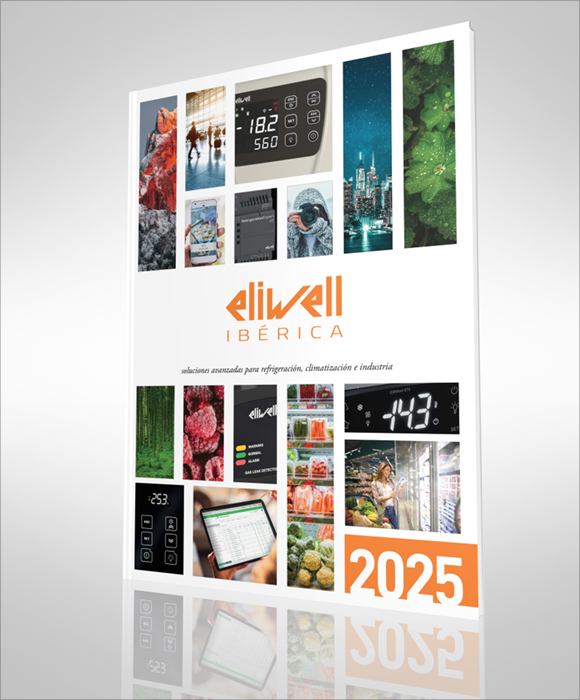Acoustic and luminous signaling for cold rooms and proper data recording in CO2 cold rooms is essential to ensure safety and regulatory compliance in Spain.
Eliwell thermometers and recorders are metrologically certified.
In the world of refrigeration systems, safety is a top priority. To ensure a safe and compliant environment, it is necessary to understand and correctly apply the specifications for acoustic and luminous signaling, especially when using refrigerant gases such as CO2.
In this article, we will break down the essential requirements established by the Refrigeration Installations Regulation (RIF) of Royal Decree 552/2019 for cold rooms using CO2.
Why Is Signage Important in CO2 Installations?
Carbon dioxide (CO2) is a natural refrigerant gas that, although it has ecological advantages, can present significant risks at high concentrations.
A CO2 leak can displace oxygen in the air and cause asphyxiation. For this reason, Spanish regulations impose strict requirements for acoustic and luminous signaling to ensure the safety of people.
Acoustic and luminous signaling requirements for CO2 chambers
CO2 Leak Detection
To prevent accidents, it is mandatory to install CO2 detectors in key areas of the facility, such as the engine room and cold rooms. These detectors must be able to identify dangerous CO2 concentrations and activate the corresponding alarms. We recommend our Eliwell LKD Next leak detectors.
2. Acoustic Alarms
In the event of a CO2 leak, the detectors must activate an audible alarm that is clearly audible in all affected areas. It is essential that these alarms are loud enough to alert all personnel present, even in noisy environments. Eliwell has a locked person alarm.
Illuminated Signage
Simultaneously with the acoustic alarms, flashing light signals must be activated. These signs should be visible from all critical points in the facility to ensure that anyone, regardless of location, is alerted to the emergency. See infographic at the end of the post
4. Manual Emergency Systems
Cold rooms should be equipped with emergency buttons accessible from the inside. These buttons allow anyone trapped inside the chamber to manually activate the acoustic and luminous alarms, ensuring a rapid response in confinement situations.
5. Regular Maintenance and Testing
To ensure that detection and alarm systems function properly at all times, regular maintenance and testing is crucial. Detectors should be recalibrated and alarms tested periodically to verify their operability.
Below, we outline in a very graphic way the equipment we recommend to comply with the signaling for chambers depending on the temperature range in which they operate. They are divided into three types:
Positive or refrigerated chambers: from 0º to 5ºC.
Negative or freezing chambers: <0ºC
Machine rooms and premises with more than 30 cubic meters of space




